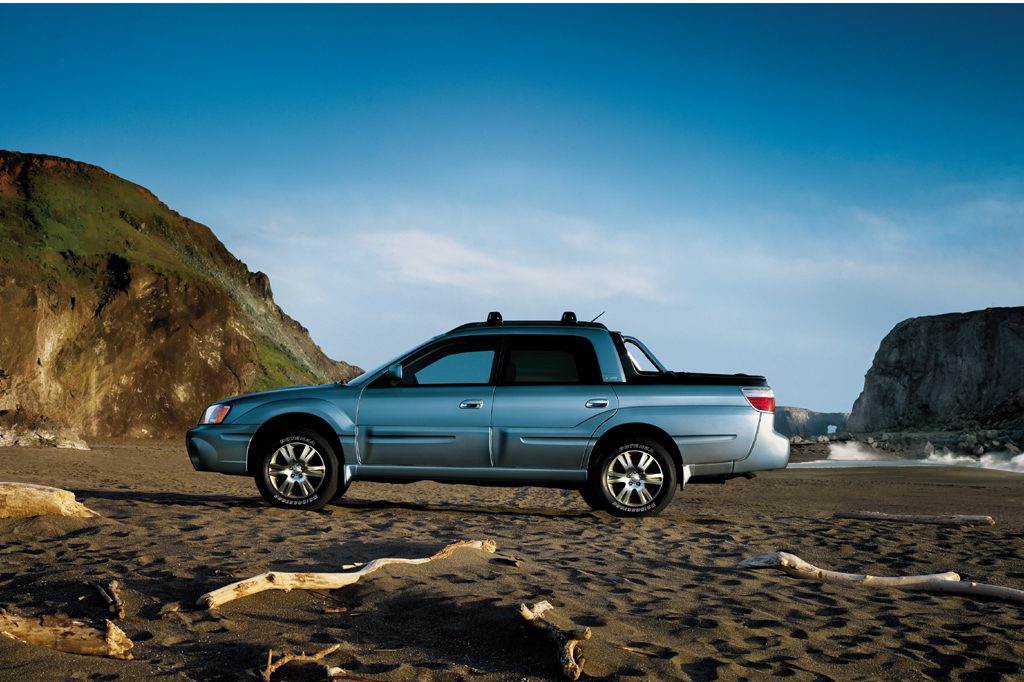| Compact SUV; Built in USA |
|
|
| Good condition price range: $6,800 – $13,500* |

2004 Subaru Baja

2004 Subaru Baja

2006 Subaru Baja
| Pros: |
|
| Cons: |
|
Baja lacks the utility of conventional compact pickups, but its versatility, features and carlike manners have appeal. So does the all-wheel drive, which provides SUV-like traction without excess bulk or fuel thirst. On the other hand, Baja is the sort of thing Barbie might drive–which might explain why more people didn’t take to it.
Overview
This compact 4-dr pickup bowed for 2003 as an adaptation of Subaru’s SUV-flavored Outback wagon. Baja had an open cargo bed at the rear instead of a roofed-in load space, seating for four instead of five, and heavy bodyside cladding designed to impart a more-rugged look. The wagon-to-pickup transformation also added 6 inches to overall length. Otherwise, Baja was basically a 4-cyl Outback wagon with the same all-wheel drive, high-riding suspension, and a 2.5-liter engine with horizontally opposed cylinders. The engine’s 165 hp was channeled through a 5-speed manual transmission or an optional 4-speed automatic with manual-shift capability.
Like Chevrolet’s big Avalanche, the Baja combined attributes of pickup truck and sport-utility wagon. But unlike most pickups, Baja used unibody construction instead of body-on-frame, so its cargo box was part of the main body structure and not bolted on. That bed was only 3.5-ft long, but an optional flip-out bed extender increased effective box length to 5 ft. For even longer cargo, a standard Switchback panel below the rear window could be opened to make a 3-ft by 1-ft pass-through in conjunction with a fold-down back seat. A bed liner was included, as was a roof rack.
Baja did not offer front side airbags or curtain side airbags. It did, however, come with antilock 4-wheel disc brakes, limited-slip differential, and 16-inch alloy wheels. Also standard were two-tone leather upholstery, unique interior trim, and 6-way power driver’s seat. Roof-mounted lights were available, as was a bed cover.
Despite a novel concept with no direct class competition, Baja drew few sales, a big disappointment for Subaru. Sales remained meager despite the addition of a Turbo model for 2004. Evidently, buyers either didn’t know what to make of Baja or didn’t much care for it, which means used examples will be few and far between.
Yearly Updates
| 2004 Baja A Turbo model with a 210-hp turbocharged engine was added. The non-turbo version was renamed Baja Sport and came with standard cloth upholstery. Both models received minor styling changes. |
| 2005 Baja The Sport was unchanged. The Turbo was offered in a new standard version with manual transmission and cloth upholstery, and in a higher-priced leather-trimmed model sold only with automatic. The latter included a standard bed cover. |
| 2006 Baja All models are unchanged from 2005. |
